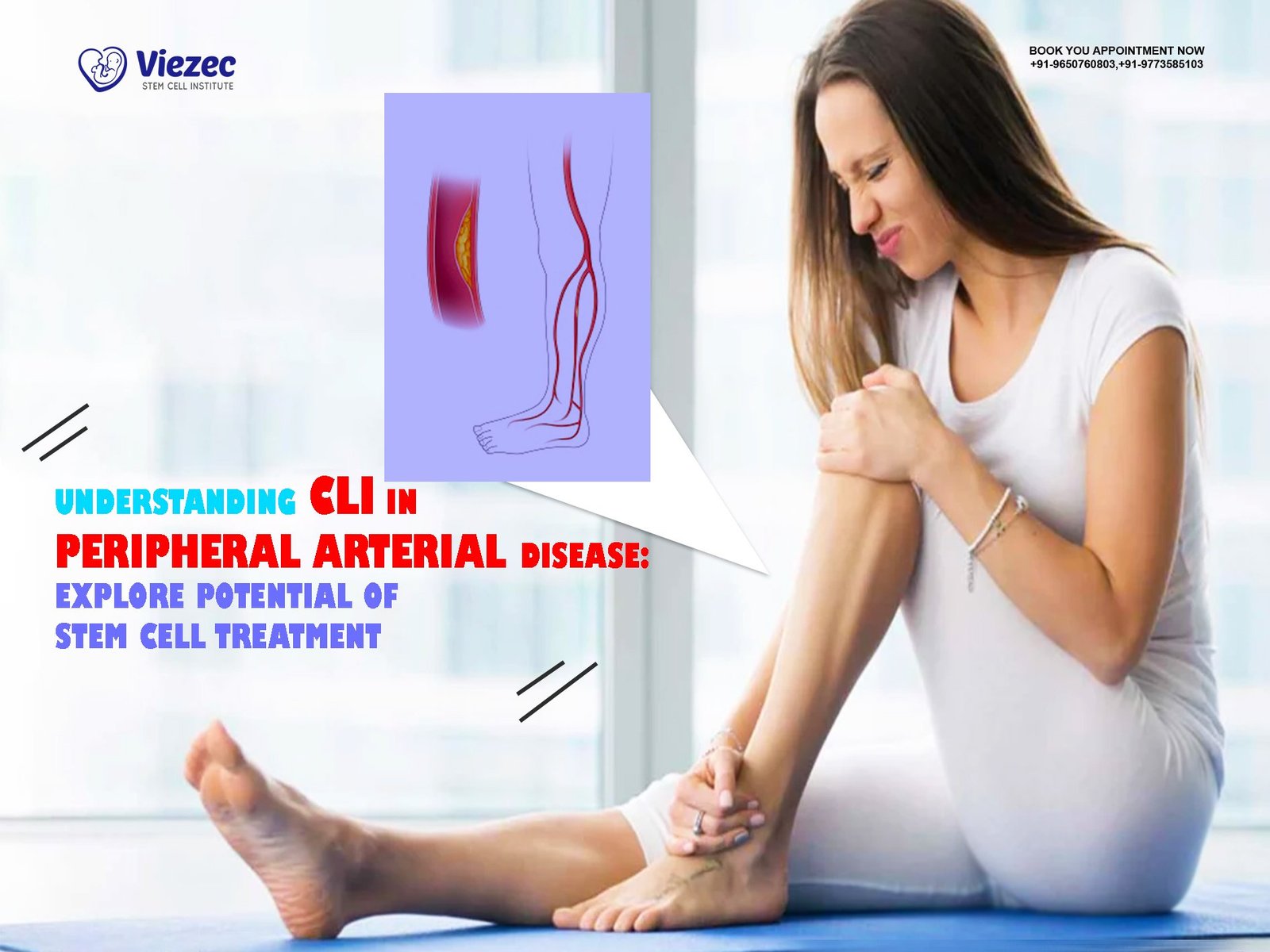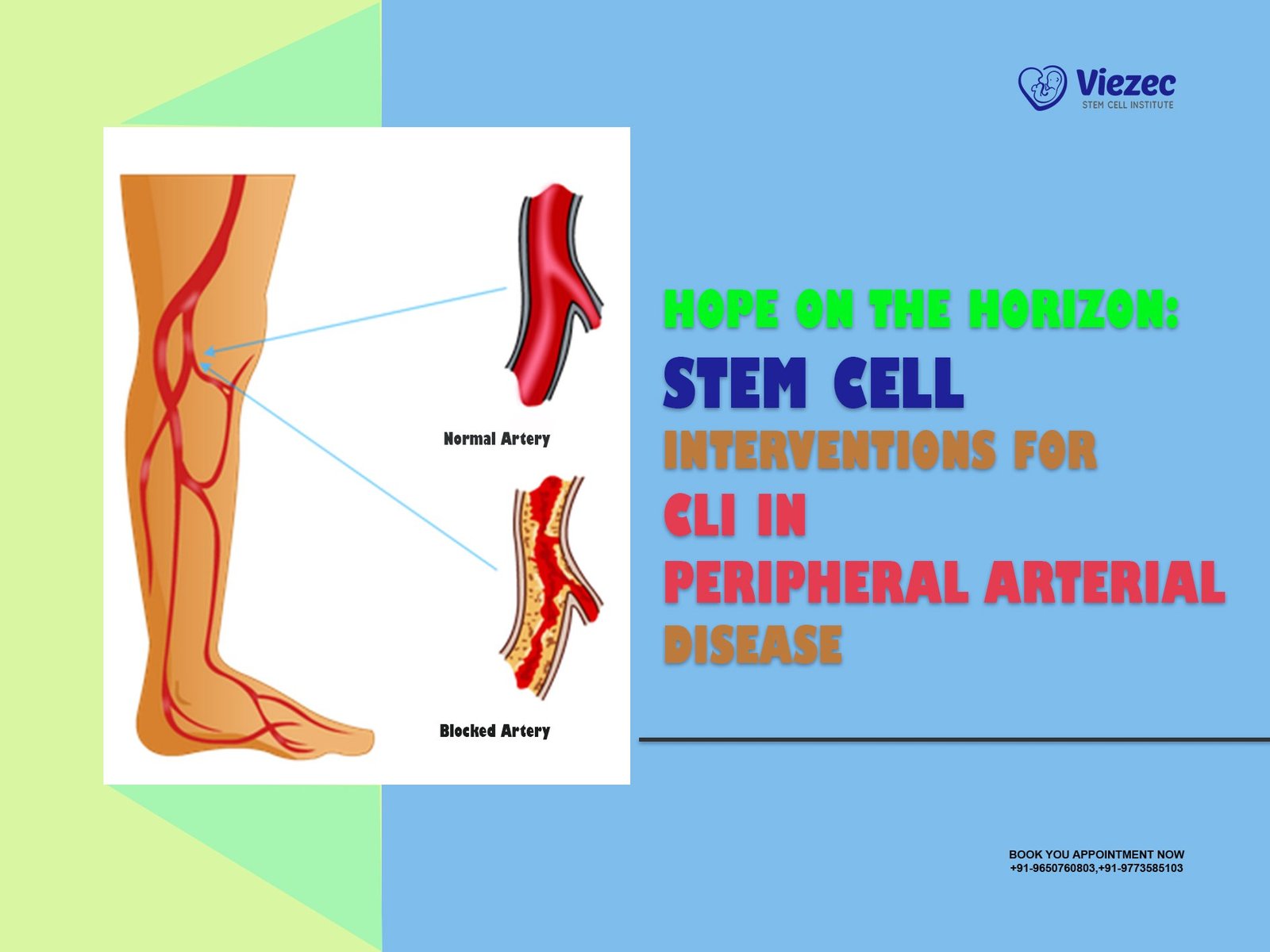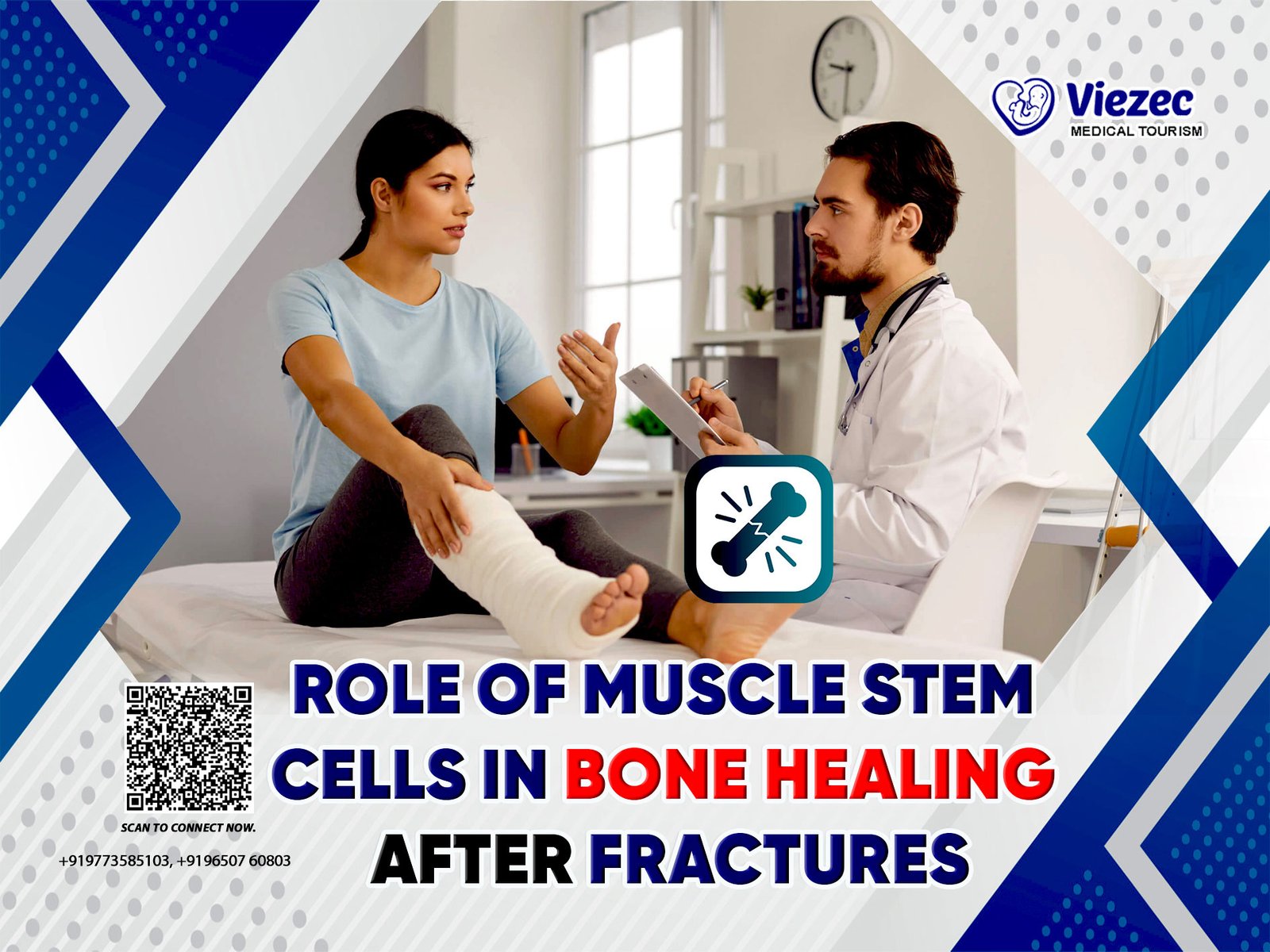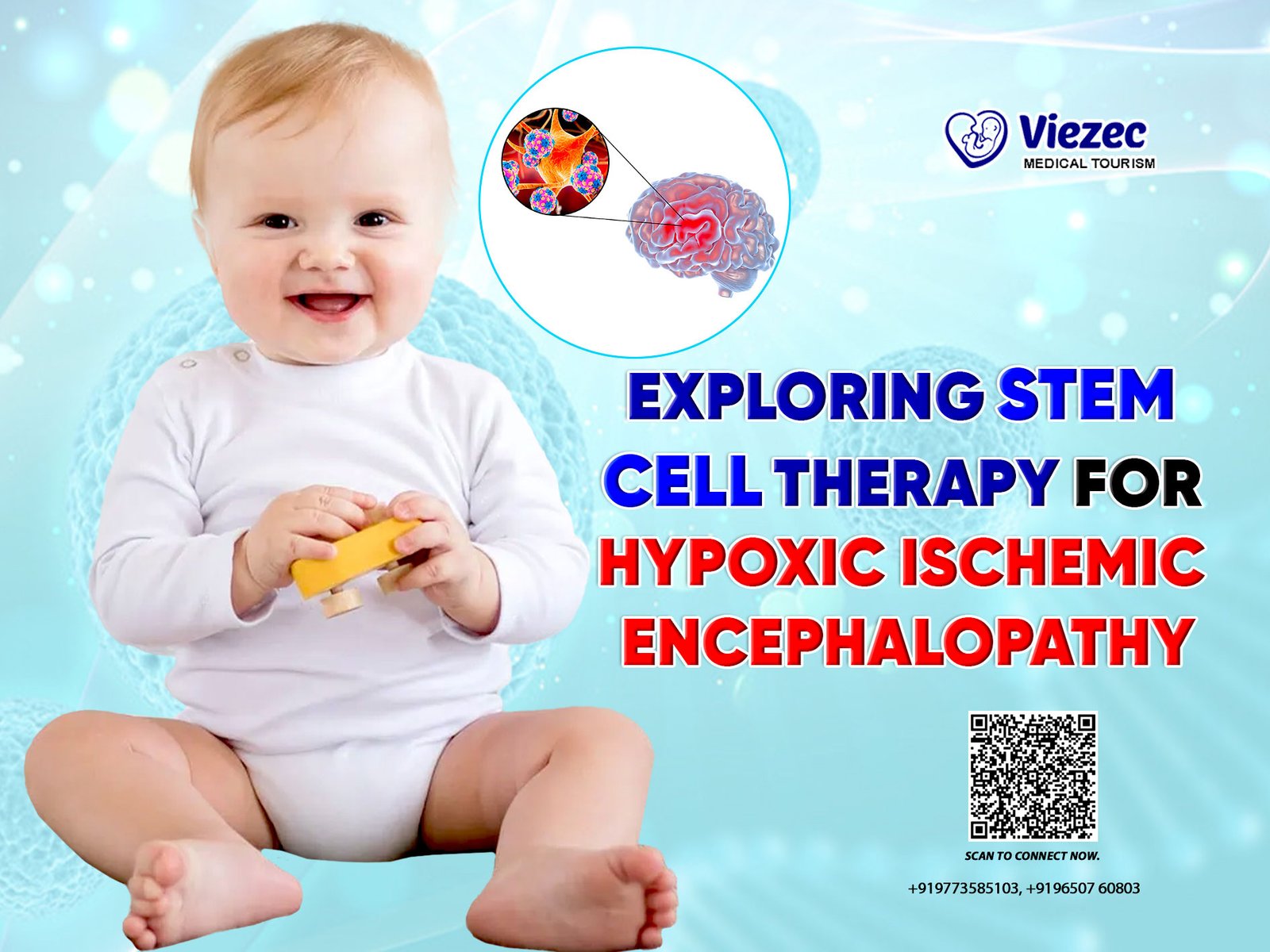Peripheral Arterial Disease (PAD) casts a shadow on millions globally, with its severe complication, Critical Limb Ischemia (CLI), posing a dire threat to limb health. In the quest for innovative solutions, the spotlight turns to the promising realm of stem cell approaches. As we navigate the intricacies of CLI within the context of PAD, the regenerative prowess of stem cells emerges as a beacon of hope. This article delves into the evolving landscape of stem cell therapies, exploring their potential to revolutionize CLI treatment, mitigate challenges, and pave the way for a more optimistic future in the management of this debilitating vascular condition.
Understanding Stem Cells
Stem cells, the unsung heroes of regenerative medicine, possess extraordinary versatility. These undifferentiated cells, found in various tissues, hold the power to morph into specialized cell types. Mesenchymal Stem Cells (MSCs) and Induced Pluripotent Stem Cells (iPSCs) stand out for their pivotal roles in medical breakthroughs. MSCs, sourced from bone marrow or adipose tissue, exhibit regenerative prowess, while iPSCs, reprogrammed from mature cells, offer limitless potential. This inherent ability to transform and repair damaged tissues fuels the hope that stem cell therapies hold for treating conditions like Critical Limb Ischemia. Unlocking the mysteries of stem cells promises a revolutionary leap in healthcare.
CLI in Peripheral Arterial Disease: Current Challenges
Critical Limb Ischemia (CLI) within Peripheral Arterial Disease presents formidable challenges in contemporary healthcare. This advanced stage of PAD manifests as severe blood flow restriction to the extremities, elevating the risk of limb amputation. The current challenges lie in the complexity of CLI management, with conventional treatments often insufficient to address its severity. Patients grapple with limited options, emphasizing the urgent need for innovative approaches. From delayed diagnosis to the intricate nature of vascular complications, navigating CLI’s hurdles demands a comprehensive understanding. Only by overcoming these challenges can the medical community pave the way for more effective and patient-centric solutions.
Promise of Stem Cell Therapies
The promise of stem cell therapies lies in their transformative potential to revolutionize the treatment landscape for Critical Limb Ischemia (CLI) in Peripheral Arterial Disease. Stem cells, with their regenerative prowess, offer a beacon of hope for patients facing the specter of limb amputation. Unlike traditional treatments, stem cell therapies hold the capacity to stimulate the growth of new blood vessels, restoring circulation and mitigating the severe consequences of CLI. This innovative approach not only addresses the immediate challenges posed by CLI but also opens doors to a future where limb salvage becomes a reality, promising improved quality of life for patients.
Types of Stem Cells in Focus
In regenerative medicine, two prominent types of stem cells take center stage: Mesenchymal Stem Cells (MSCs) and Induced Pluripotent Stem Cells (iPSCs). Mesenchymal Stem Cells, sourced from bone marrow and other tissues, exhibit remarkable versatility in differentiating into various cell types, making them ideal for regenerating damaged tissues. On the other hand, Induced Pluripotent Stem Cells are artificially reprogrammed from adult cells, offering a potentially limitless supply. Both types hold immense promise in addressing critical limb ischemia associated with Peripheral Arterial Disease, showcasing their unique attributes and paving the way for innovative therapeutic interventions.
Scientific Breakthroughs and Research Findings
CLI treatment, recent scientific breakthroughs have illuminated a path of hope. Pioneering research has unveiled compelling evidence of stem cells fostering blood vessel regeneration, significantly improving circulation in CLI-affected limbs. Cutting-edge studies showcase the transformative potential of stem cell therapies, offering glimpses into a future where amputations due to CLI could be avoided. These findings underscore a paradigm shift in vascular medicine, as researchers delve deeper into harnessing the regenerative prowess of stem cells. Such breakthroughs fuel optimism, propelling the field toward innovative solutions for the complex challenges posed by Critical Limb Ischemia.
Clinical Trials and Progress
Clinical trials evaluating stem cell therapies for CLI have demonstrated notable progress, marking a pivotal stage in medical advancement. Rigorous testing in controlled environments has revealed promising results, showcasing the safety and efficacy of these innovative treatments. Milestones achieved in these trials underscore the potential for regenerative interventions to address critical limb ischemia. Researchers are meticulously analyzing data, refining protocols, and ensuring ethical standards. As these trials move forward, they contribute crucial insights that propel stem cell therapies closer to mainstream clinical practice, offering hope to those grappling with the debilitating consequences of Peripheral Arterial Disease.
Patient Experiences and Testimonials
Patient experiences and testimonials provide compelling narratives of hope and transformation. Stories of individuals who have undergone stem cell therapies for Critical Limb Ischemia (CLI) in Peripheral Arterial Disease paint a vivid picture of the potential impact. From avoiding amputation to regaining mobility, these testimonials underscore the profound positive effects of stem cell interventions, offering real-life testament to the promise and success of this innovative approach.
Costs
Addressing the cost factor is paramount in realizing the potential of stem cell approaches for CLI. While the innovative therapies offer hope, concerns about their affordability and accessibility persist. Initiatives focused on reducing costs and improving accessibility are crucial to ensuring that these groundbreaking treatments are not only scientifically advanced but also widely available to those in need, paving the way for a more inclusive and impactful future in peripheral arterial disease management.
Expert Opinions and Perspectives
In stem cell research for Critical Limb Ischemia (CLI), expert opinions and perspectives offer valuable insights. Renowned researchers and medical professionals weigh in on the challenges, potential breakthroughs, and ethical considerations surrounding stem cell therapies. Their diverse viewpoints contribute to a comprehensive understanding of the field, guiding the ongoing efforts to harness the regenerative power of stem cells for the effective treatment of CLI associated with Peripheral Arterial Disease.
Educational Initiatives for Public Awareness
Public awareness about stem cell therapies is vital. Educational initiatives aimed at dispelling myths and fostering understanding can contribute to broader acceptance and support for these innovative treatments.
The future appears promising for stem cell approaches in treating CLI associated with Peripheral Arterial Disease. The combination of scientific advancements, ongoing clinical trials, and collaborative efforts positions stem cell therapies as a beacon of hope for patients facing the severe consequences of CLI.
FAQs
Are stem cell therapies safe for treating CLI?
Stem cell therapies for CLI are undergoing rigorous testing in clinical trials to ensure safety and efficacy. Early results are promising, but continued research is essential.
How do stem cells promote blood vessel regeneration?
Stem cells have the unique ability to differentiate into various cell types, including those forming blood vessels. This regenerative capacity contributes to improved blood circulation in affected limbs.
What challenges do researchers face in advancing stem cell therapies for CLI?
Researchers face challenges such as standardization, long-term safety, and ethical considerations. Overcoming these hurdles is crucial for the successful integration of stem cell treatments into clinical practice.
Can stem cell therapies completely replace traditional treatments for CLI?
While stem cell therapies show great promise, they may not completely replace traditional treatments. A combination of approaches tailored to individual patient needs might be the most effective strategy.
How can the public contribute to advancing stem cell research for CLI?
Public support and awareness play a vital role. Individuals can contribute by staying informed, participating in educational initiatives, and advocating for continued research funding.









